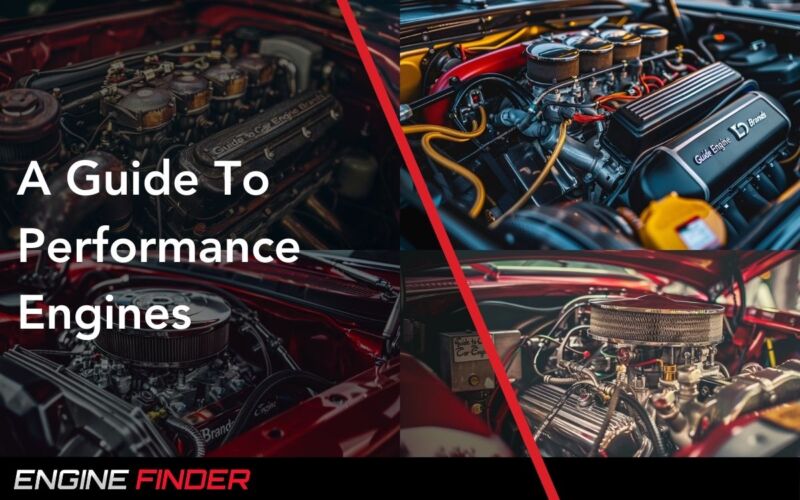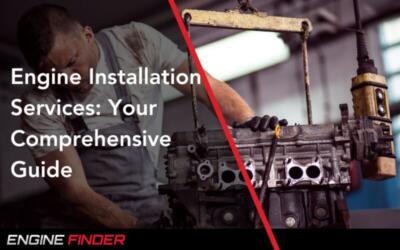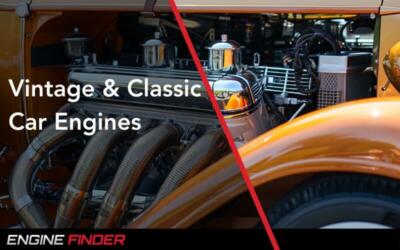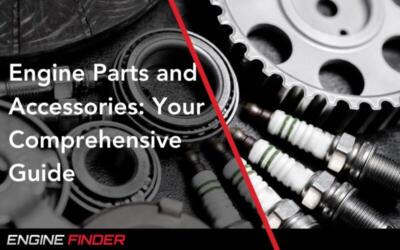Introduction
As a car enthusiast, there’s nothing quite like the thrill of a high-performance engine. The raw power, the exhilarating acceleration, and the adrenaline rush that comes with pushing a machine to its limits – it’s an experience like no other. In this article, I’ll take you on a journey through the world of performance engines, exploring the different types, technologies, and tuning techniques that make these powerplants so special.
Types of Performance Engines
Performance engines come in many forms, each with its own unique characteristics and advantages. Let’s take a closer look at two of the most popular types:
Naturally Aspirated Engines
- High-revving designs: Naturally aspirated engines, particularly those found in sports cars, are often designed to rev high and deliver a thrilling driving experience.
- Displacement and cylinder configurations: These engines come in various displacements and cylinder configurations, from high-revving four-cylinders to powerful V8s and V10s.
Forced Induction Engines
- Turbocharged engines: Turbochargers use exhaust gases to spin a turbine, which compresses air and forces it into the engine for increased power output.
- Supercharged engines: Superchargers are mechanically driven by the engine and provide instant boost for improved performance.
- Benefits and challenges of forced induction: While forced induction can significantly increase power, it also presents challenges in terms of heat management and reliability.
Engine Specifications and Design
When it comes to performance engines, the devil is in the details. Every aspect of the engine’s design and specification plays a crucial role in determining its overall performance and character.
Key Performance Paramete
rs
| Parameter | Description |
|---|---|
| Horsepower and Torque | The primary measures of an engine’s power output and pulling force. |
| Compression Ratio and Redline | Higher compression ratios and redlines often indicate a more performance-oriented engine. |
| Engine Weight and Materials | Lightweight materials and compact designs contribute to better power-to-weight ratios. |
Internal Components
- High-strength engine block and heads: Performance engines often feature reinforced blocks and heads to withstand the increased stresses of high-performance operation.
- Performance camshafts and valvetrain: Aggressive camshaft profiles and high-flow valvetrain components help maximize power output.
- Forged pistons and connecting rods: Forged components offer increased strength and durability compared to cast parts.
- High-performance crankshafts: Precision-balanced and heat-treated crankshafts are essential for high-revving performance engines.
Engine Management Systems
- Programmable ECUs: Aftermarket engine control units allow for precise tuning and optimization of engine parameters.
- Advanced fuel injection and ignition systems: High-performance engines often employ advanced fuel injection and ignition technologies for improved efficiency and power delivery.
- Engine mapping and tuning software: Specialized software enables engine tuners to fine-tune various aspects of engine performance, such as fuel maps and ignition timing.
Performance Engine Tuning and Modifications
For many enthusiasts, the real fun begins when it’s time to tune and modify their performance engines. Here are some popular areas of focus:
Intake and Exhaust Upgrades
- High-flow air filters and intakes: Improving airflow into the engine can yield significant gains in power output.
- Performance exhaust headers and systems: Well-designed exhaust systems help reduce backpressure and optimize exhaust gas flow for improved performance.
- Turbocharger and supercharger upgrades: Upgrading forced induction components can dramatically increase power output, but requires careful tuning and supporting modifications.
Engine Internals Modifications
- Stroker kits and displacement increases: Increasing engine displacement through a stroker kit can provide a significant boost in torque and power.
- High-compression pistons and performance cylinder heads: Upgrading to high-compression pistons and ported cylinder heads can improve engine efficiency and power output.
- Camshaft and valvetrain upgrades: Installing a performance camshaft and upgrading valvetrain components can help optimize engine breathing and power delivery.
Engine Management Tuning
- Fuel and ignition mapping: Fine-tuning fuel and ignition maps can help optimize engine performance for specific modifications and operating conditions.
- Boost control and throttle response: Adjusting boost levels and throttle response can dramatically alter the character and performance of forced induction engines.
- Launch control and traction control systems: Integrating advanced launch and traction control systems can help manage the increased power output of modified engines.
Maintenance and Reliability of Performance Engines
While performance engines are designed to deliver exceptional power and thrills, they also require special attention when it comes to maintenance and reliability. Here are some key considerations:
- Break-in procedures and oil changes: Proper break-in and regular oil changes are crucial for ensuring the longevity of high-performance engines.
- Regular maintenance and inspections: Performance engines often require more frequent maintenance and inspections to keep them running at their best.
- Common failure points and preventive measures: Understanding common failure points, such as high-stress components or cooling system weaknesses, can help prevent costly repairs.
- Engine rebuilding and reconditioning: As performance engines age or experience wear, rebuilding or reconditioning may be necessary to restore peak performance.
Applications of Performance Engines
Performance engines find their way into various applications, each with its own unique demands and challenges. Let’s explore a few:
| Application | Key Characteristics |
|---|---|
| Drag Racing |
|
| Circuit Racing |
|
| Rally and Off-Road Racing |
|
| Street Performance |
|
Advances in Performance Engine Technology
The world of performance engines is constantly evolving, with new technologies and innovations pushing the boundaries of what’s possible. Here are a few exciting developments:
Materials and Manufacturing Processes
- Lightweight alloys and composites: Advanced materials help reduce engine weight while maintaining strength and durability.
- 3D printing and additive manufacturing: These technologies enable rapid prototyping and the creation of complex, high-performance components.
Hybrid and Electric Performance Engines
- Integration of electric motors and batteries: Hybrid systems can provide instant torque and improved efficiency, complementing traditional combustion engines.
- High-performance electric powertrains: As electric vehicle technology advances, high-performance electric engines are becoming increasingly capable and exciting.
Alternative Fuels and Engine Efficiency
- High-octane race fuels and ethanol blends: Specialized fuels can help extract maximum performance from high-compression engines.
- Advanced combustion chamber designs and variable valve timing: These technologies help improve engine efficiency and power output while reducing emissions.
Conclusion
The world of high-performance engines is a fascinating one, filled with endless possibilities for innovation, customization, and adrenaline-pumping excitement. From the raw power of naturally aspirated V8s to the cutting-edge technology of hybrid powertrains and electric speedsters, there’s no shortage of ways to satisfy your need for speed.
As you explore the realm of performance engines, remember that knowledge, preparation, and a commitment to proper maintenance are key to unlocking their full potential. Whether you’re a seasoned gearhead or a curious enthusiast, there’s always more to learn and discover in this ever-evolving world of automotive performance.
So, buckle up, hold on tight, and get ready to experience the thrill of high-performance engines. With the right combination of passion, skill, and technology, you’ll be well on your way to unleashing the power within. And if you’re in need of a reliable used engine to kickstart your high-performance build, look no further than Engine Finder – your trusted source for quality used engines and expert advice.
References
https://www.onallcylinders.com/2022/08/01/the-top-10-greatest-high-performance-engines-of-all-time-says-you/
https://www.hpacademy.com/forum/off-topic-discussion/show/best-favourite-performance-engine-and-opinions-on-each/
https://www.caranddriver.com/features/g15379322/best-car-engines/
https://www.hotcars.com/best-performance-v6-engines/
https://www.autoevolution.com/news/5-best-high-performance-v6-engines-ever-fitted-into-production-cars-226207.html
https://www.drivingline.com/articles/the-5-best-chevy-v8-engines-of-all-time/
https://www.sciencedirect.com/topics/engineering/engine-performance
https://journals.flvc.org/cee/article/download/122733/121782




